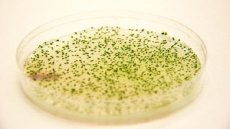New publications
Scientists have isolated lung stem cells for the first time
Last reviewed: 30.06.2025

All iLive content is medically reviewed or fact checked to ensure as much factual accuracy as possible.
We have strict sourcing guidelines and only link to reputable media sites, academic research institutions and, whenever possible, medically peer reviewed studies. Note that the numbers in parentheses ([1], [2], etc.) are clickable links to these studies.
If you feel that any of our content is inaccurate, out-of-date, or otherwise questionable, please select it and press Ctrl + Enter.

Researchers from Brigham and Women's Hospital in Boston (USA) have for the first time isolated human lung stem cells capable of self-renewal, as well as the formation and integration of a number of biological structures, including bronchioles, alveoli and pulmonary vessels.
The cells were identified in surgical lung tissue samples, isolated, and tested both in vitro and in vivo. The stem cells were injected into mice with damaged lungs in six doses of 20,000 cells. They not only formed new tissue, but also integrated into existing tissue within 10 to 14 days.
The researchers define the cells as true stem cells because they satisfy three conditions: First, the cell renews itself; second, it develops into many different types of lung cells; and third, it is transferable. That last means that when mice were injected with stem cells and the body responded by generating new tissue, the researchers were able to isolate the stem cells from those mice and use them in other mice with the same results.
What exactly the stem cells do while they're in the lungs remains unknown. "They're smarter than us!" That's all the stunned study co-author Piero Anversa can say for now. Scientists have only one way to work with lung stem cells: extract them from the body, multiply them, and inject them. Then they act on their own.
Experts believe that in the immediate future, stem cells will be useful for treating emphysema and pulmonary hypertension, as well as restoring the lungs after cancer surgery. Scientists cannot say anything about asthma yet.
Colleagues comment on this news with caution: they want to see lung stem cells with their own eyes. “It’s hard for me to imagine that they are capable of forming the full diversity of lung tissues, which contain more than forty types of cells,” notes, for example, Bridget Gomperts from the University of California, Los Angeles (USA).

 [
[